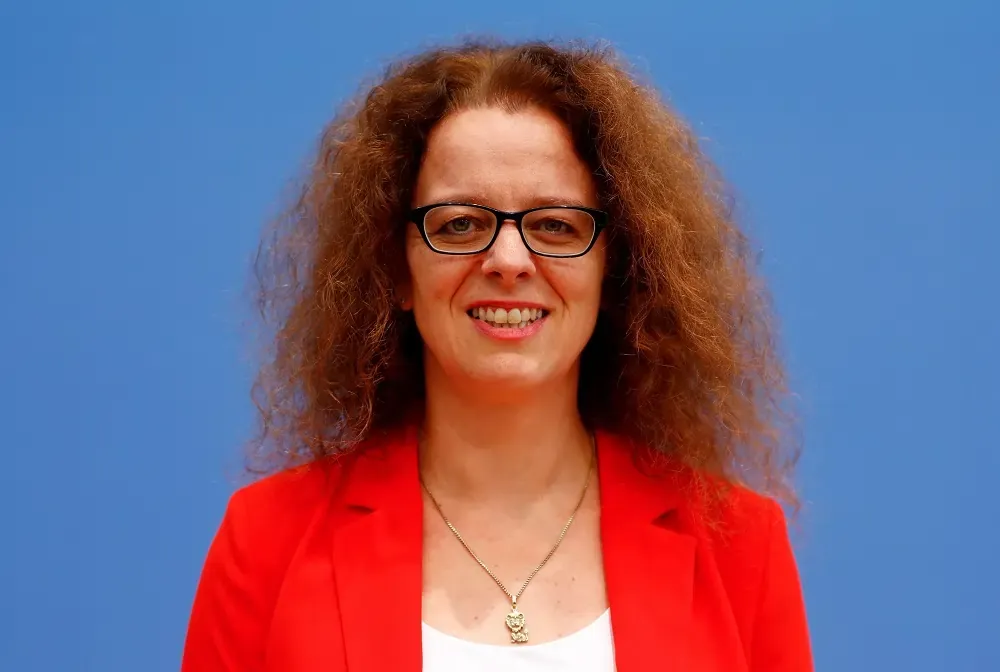
FRANKFURT (Reuters) – The European Central Bank’s leading hawk Isabel Schnabel has reconciled her institution with investors who have long bet the ECB is finished raising interest rates, but a new tug of war, on the exact timing of the first cut, is now looming.
In an exclusive interview with Reuters, the ECB board member took further rate hikes off the table given a “remarkable” fall in inflation.
As policymakers headed into a quiet period before next week’s rate-setting meeting, she also declined to repeat recent statements by colleagues that borrowing costs should remain at record highs until the middle of next year.
Instead, the German, who has developed a following among traders after correctly predicting two years ago that inflation would prove sticky, said rate-setters will take their cue from incoming data and be wary of declaring victory too soon.
Her comments come after weeks of concerted but futile efforts by ECB President Christine Lagarde and some other policymakers to talk markets out of betting on rate cuts as soon as the spring in the face of soft data on prices and credit.
“You needed that kind of intervention,” Melissa Davies, chief economist at Redburn Atlantic, said. “She’s telling markets ‘you’re on the right line but don’t go overboard betting on a rate cut in the spring’.”
Yet traders seemed to do just that.
They brought forward bets on a possible first cut to March from April and now expect 140 basis points’ worth of easing by December, increasing the discord between the ECB and the markets about the speed and pace of rate reductions.
“I would caution against concluding that she’s endorsing current market expectations,” said Fabio Balboni, senior European economist at HSBC. “The risk is that some people are over-interpreting what she’s saying.”
Schnabel’s comments carry particular weight because she is seen as the most influential voice in the conservative camp of policymakers that drove a string of rate increases – the steepest in the euro’s history – in the last 1-1/2 years.
She explicitly said, however, that the ECB must be more cautions than markets expect, and that it should err on the side of caution.
DECISIONS TO MAKE
Economists said there were a number of reasons to believe the ECB would not move until April or later.
For starters, policymakers would first want to see wage settlement data that won’t be fully available until the spring.
Second, the ECB needs to address the future of the 1.7 trillion euros ($1.84 trillion) of bonds it bought under its Pandemic Emergency Purchase Programme, which it has pledged to keep topping up until the end of 2024.
It is likely to move that deadline forward, but any stop to reinvestments of maturing debt would need to be gradual, to avoid disrupting bond markets.
“They can’t really cut rates while reinvestments continue, which puts you into April, already,” Dankse Bank’s Director for ECB and Fixed Income Research, Piet Haines Christiansen, said. “My call (for the first rate cut) is still June.”
Lastly, the ECB will be in the middle of deciding how it wants to supply euro zone banks with liquidity in the coming years – by lending to them or buying bonds from them – a complex topic that will take a chunk of policymakers’ time and energy.
“There’s a lot going on in the spring to also have a rate cut,” Redburn Atlantic’s Davies said.
Pictet Wealth Management’s head of macroeconomic research, Frederik Ducrozet, was also sticking to his call for a first rate reduction in June but saw some risk of an April move after the Schnabel interview.
“The leading hawk is shifting to a more cautious approach – that’s an important change,” Ducrozet said.
($1 = 0.9244 euros)
(Editing by Catherine Evans)


